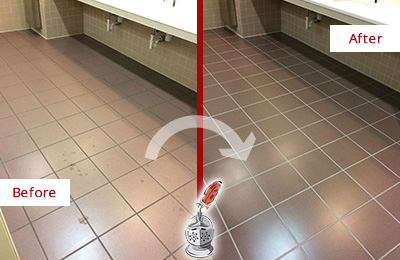Protecting Against Water Damage in the Bathroom
Protecting Against Water Damage in the Bathroom
Blog Article
The article which follows involving How to Prevent Bathroom Water Damage is fairly intriguing. You should take a look.

The restroom is exceptionally prone for moist build-up and prospective water damage because of the constant use of water in it. This write-up offers easy inspection methods to help spotting water damages hazards.
The frequent use water in the restroom makes it exceptionally vulnerable for wet accumulation and also possible water damage. By evaluating it frequently, you can reduce water related damages.
The adhering to collection of evaluations is simple to perform and need to be done once in every three months in order to keep your bathroom in good shape and to avoid possible water damages triggered by the bathtub, the shower, pipeline joints and plumbing, sinks, cupboards, and also the toilet
Do not disregard carrying out these examinations and be extensive while executing them. Keep in mind that these easy examinations can conserve you a lot of cash by giving early indicators for water damages
Bathtub and Shower
The shower as well as bath tub call for special interest and also maintenance. Inspect the ceramic tiles and also change if cracked. Make certain that there is no missing out on cement between the ceramic tiles. Check and also replace broken caulking at joints where the wall surfaces fulfill the flooring or the bathtub. Obstructed drains and pipes troubles will certainly prevent the bathtub from drying as well as might show serious problems below the tub. Seek advice from a specialist immediately to avoid structural damage. Take note of discolorations or soft areas around the bathtub walls as they may show an interior leak.
Plumbing
Signs for water damage are hard to detect given that many pipes are installed inside the walls.
Pay special focus to floor covering and also wall surfaces wetness as well as spots as they may indicate an invisible plumbing problem. Examine dampness degrees in adjoining rooms too.
Sinks as well as Cabinets
Sinks as well as cabinets are exposed to dampness and also moisture everyday and are often forgotten. Examine frequently under the sink and on the kitchen counter over it. Repair any drip in the catch as it might suggest drain troubles. Check out the sink, sluggish draining pipes might show an obstructed drain. Replace sink seals if they are fractured or loosened.
The Toilet
The commode is a prone water junction. Check the water lines and also search for leaks around the commode seat, in the pipe, and under the water container. If you find any signs of wetness on the floor around the commode, look for leaks in the toilet edge as well as container seals.
Realize that hanging commode dish deodorants boosts the possibilities for clogs.
TIPS TO PREVENT WATER DAMAGE IN THE BATHROOM
The average household uses approximately 80-100 gallons of water per person per day. For a family of 4, that's almost 2,500 gallons of water a week! The largest portion of this consumption comes from bathroom use. Flushing the toilet uses the most water, followed by taking a shower or bath. With that much water running through the home, water damage in the bathroom is bound to happen. Knowing how to spot signs of a water leak is essential to preventing long-term damage. This guide provides you with tips to reduce the impact of water damage on your bathroom.
CAUSES OF BATHROOM WATER DAMAGE
Pipe breaks are the most common cause of water damage we see in our daily jobs. The age of a pipe plays a large role in a pipe break as well as corrosion. Over time, the metal begins to break down, allowing water to escape. Frozen pipe breaks are also a concern in the winter months. Toilet overflows caused by paper products or children flushing inappropriate items. Degraded caulking around the toilet or bathtub can allow water seepage, sometimes behind the fixture, into the subfloor or walls. Condensation forms when the water in a pipe is cooler than the air temperature. Beads of water form on the exterior of the pipes, sometimes so much so that the water begins to drip and pool below. Sink or shower backups created by poor drainage. HOW TO PREVENT WATER DAMAGE IN YOUR BATHROOM
Inspect your toilet supply line for worn or frayed hoses and replace them as needed. Winterize your plumbing to prevent a frozen pipe break. Use vent fans to prevent condensation that can lead to mold growth. Routinely check and replace degraded caulking around your toilet or bathtub. Increase the temperature in your toilet tank and insulate your pipes during the warm summer months to keep condensation from forming. Use child safety locks on the toilets. Flush only toilet paper. "Flushable" wet wipes are actually not good for your plumbing system. Additionally, feminine hygiene products should not be flushed. Prevent water from escaping the tub or shower. Make sure shower curtains are in good condition. Inspect shower doors and replace the seal strip if necessary. Wipe up any water that accumulates on the floor and use bath mats. Water left to sit can cause damage to the tiles and flooring. Refrain from using bath products containing heavy oils to avoid a clogged drain.

I was brought to that article about How to Fix a Water Damage Bathroom from a good friend on a different web address. In case you enjoyed our page kindly be sure to share it. Thank you for your time. Please pay a visit to our website back soon.
Get An Estimate Report this page